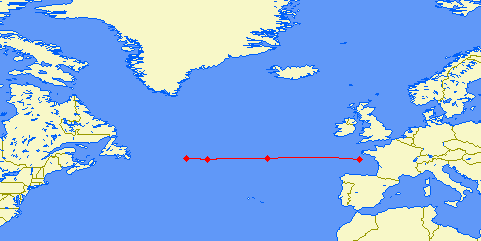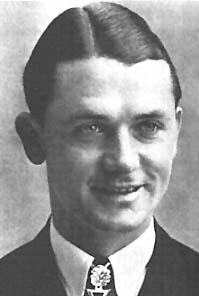Loss of U-165
by Dr. Axel Niestlé & Eric Zimmerman
(Time is German Summer Time = GMT + 2)
U-165 (Korvettenkapitän Eberhard Hoffmann) left Kristiansand-South in Norway on 9 August 1942 for its first patrol in the Atlantic. Originally envisaged for operations in the Caribbean area, U-boat Command redirected the boat on 16 August to the Canadian East coast to occupy naval grid squares AH 95/96 (off Strait of Belle Isle) as operational area. U 165 probably arrived on or about the 24 August in its assigned area. On 30 August U-boat Command extended the operational area into the Gulf of St. Lawrence and the St. Lawrence river mouth. After the expenditure of all torpedoes in a series of attacks, sinking the small 358-ton patrol yacht HMCS Raccoon and two merchant ships totalling 8.396 gross tons with three more ships of 21.751 gross tons torpedoed, U-165 commenced its return trip to France on the 16 September.
On the 21 September it exchanged identification signals with U-407 in square BC 6656. The next day it sent a weather report from square BD 4257. On 25 September U-165 again sent a weather report from square BE 44. In its last signal timed 1415 on 26 September U-165 reported its position as 48 hours before rendezvous with the escort. At that time all U-boats inbound to Lorient were under order to proceed from point "Kern" in square BF 5549 on the way "Kernleder" to the rendezvous point with the escort at point "L2" in square BF 6173 r.M. When U-165 failed to show up at the prescribed rendezvous point "L2" on 28 September, U-boat Command requested the boat on 28 and 29 September to report its position. When no report was received in the ensuing days and a search by aircraft along way "Kernleder" proved unsuccessful, on 30 September U-boat Command posted U-165 as missing effective from 28 September 1942. Based on a British broadcasting report about a successful air attack in the Bay of Biscay it was assumed that its loss had resulted from air attack during the last leg of the inbound trip through the Bay of Biscay.
After the war the allied Assessment Committee nevertheless felt unable to attribute the loss of U-165 to any known A/S-attack carried out in the Bay of Biscay during the period when the boat supposedly disappeared. Therefore the loss of U 165 remained unexplained and the boat was officially recorded as 'lost to unknown cause'. The subsequent loss of U-171 on 9 October 1942 to an aerial mine close to the rendezvous point "L2" and a report from U-594 to have heard a distant mine explosion at 2200 on 27 September while in square BF 6756 later raised some speculation that U-165 might also have fallen victim to an unobserved mine explosion.
Contrary to the findings of the Committee a careful re-examination of Allied documents related to A/S-operations in the Bay of Biscay revealed that a promising aircraft attack apparently had escaped the committee's attention in the course of the discussion about the loss of U-165. At 1905 on 27 September the Wellington Q/311 RAF Squadron (Czech) attacked a fully surfaced U-boat with six depth charges in position 47°00n/05°30W. Flying at a height of 1.200 feet the aircraft had sighted the U-boat from a distance of two miles and immediately dived on the target to attack. In the approach the aircraft came under heavy and accurate cannon and machine-gun fire from the U-boat, scoring numerous hits in the fuselage and wounding most members of the crew. Pressing home the attack on the U-boat despite the resistance, the depth charges dropped from 70 feet were seen to straddle the conning tower of the U-boat. In addition the rear gunner fired about 400 rounds on the U-boat and observed tracers hitting the conning tower. Owing to the wounds received the aircraft crew was unable to determine the exact number and position of the explosions relative to the U-boat. The rear gunner however reported to have observed the U-boat lifting bodily in the depth charge explosion. Within one minute the U-boat attacked was seen to dive slowly. Owing to the injuries sustained by the air crew in the attack the pilot left the scene of attack at once and set course to base. A failure in the hydraulics system caused by cannon hits during the attack eventually forced the pilot to make a crash-landing on return to base at St. Eval, wrecking the aircraft.
Examination of the U-boat Command war diary and the war diaries of individual U-boats at sea on the 27 September revealed the presence of a total of eleven boats in the Bay of Biscay on that day. Of these five boats (U-116, U-43, U-160, U-106 and U-454) were outbound and the remaining number (U-594, U-165, U-218, U-511, U-66 and U-411) inbound. Only the two boats U-116 and U-165 failed to return from their patrols. None of the other nine U-boats returning from patrol recorded being attacked at the time of the attack by Q/311. Furthermore, the outbound Type XB auxiliary tanker U-116, which had left Lorient on 22 September, is known to have stayed in square BE 73 at this day where the boat met with U-569 at 1200. Therefore, by exclusion of all other boats U-165 remains as the only choice for the boat attacked on this day. Moreover, the position and the time of the attack fits nicely with the expected movement of U 165 along the most likely route from its last reported position in BE 44 towards point "Kern" in BF 5549. In fact, the reported place of attack is only some 18 miles distant from this point. If the observation of the rear gunner during the attack was correct, it is to be expected that the U-boat attacked at least suffered some serious, possibly even lethal damage. The latter is supported by the fact the boat attacked apparently failed to report the attack to U-boat Command.
Post-war speculations that U-165 might have fallen victim to mining must be treated with serious doubt because in water depths beyond 40 metres the threat from magnetic and/or acoustic ground mines to U-boats cruising on the surface is only remote. The same applies to submerged boats running at slow speeds on electric motors. The complete absence of survivors, floating bodies, wreckage or any other indication for the destruction of a U-boat along the way "Kernleder" during the aircraft search operations on 29 September also stands against the possibility of mining as a plausible explanation for the loss of U 165.
Based on the findings given above it is therefore proposed to amend the records to show that U-165 was lost on 27 September 1942 at 47°00n/05°30w to the depth charge attack of Wellington Q/311 RAF Squadron (Czech), piloted by Flying Officer Vaclav Student.

3 known positions of U-165's final 6 days and the position of its sinking.
Note: Out of the six-man crew of Wellington Q/311 that took part in the attack on U 165, the pilot Flying Officer Vaclav Student, then promoted to Pilot Officer, the co-pilot Josef Svec, the wireless operator Antonin Bunzl and the air gunner Vladimir Rajecki were killed in a plane crash during a training flight on 18 October 1942 about one kilometre east of Northolt, Uxbridge. All four servicemen are buried at Brookwood Military Cemetery, Sussex.
Dr. Axel Niestlé & Eric Zimmerman
28.02.2003
This article was published on 10 Apr 2003.

